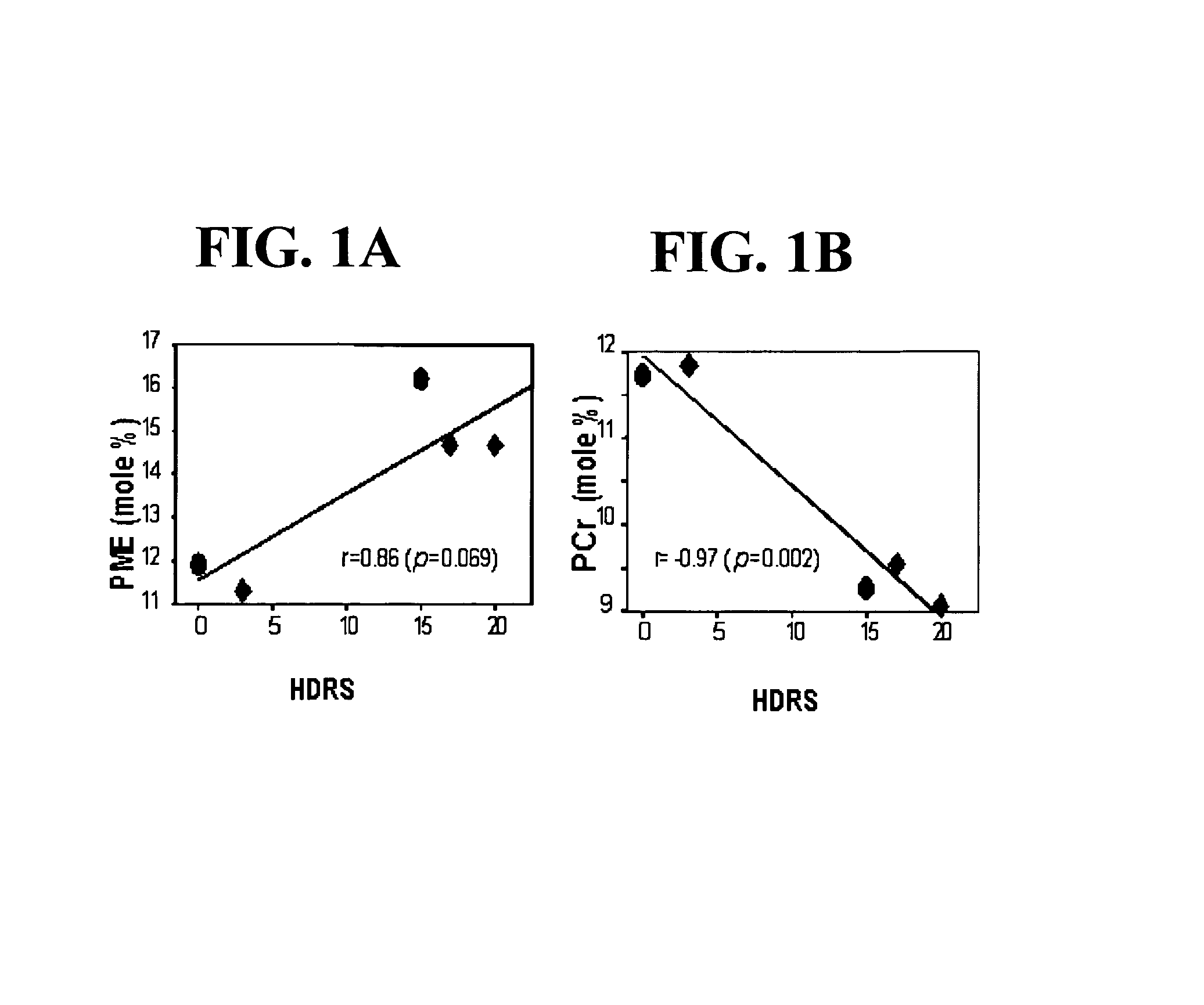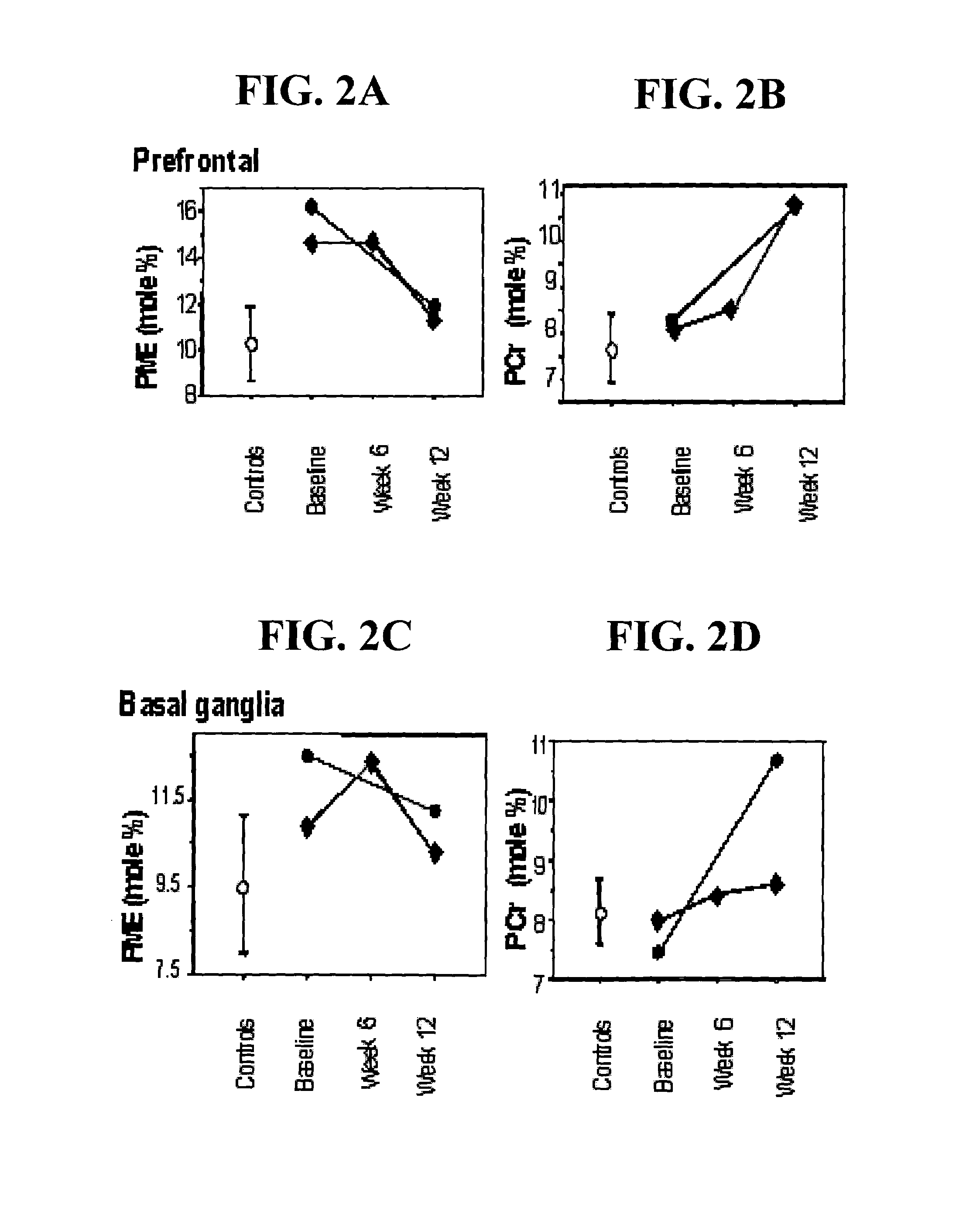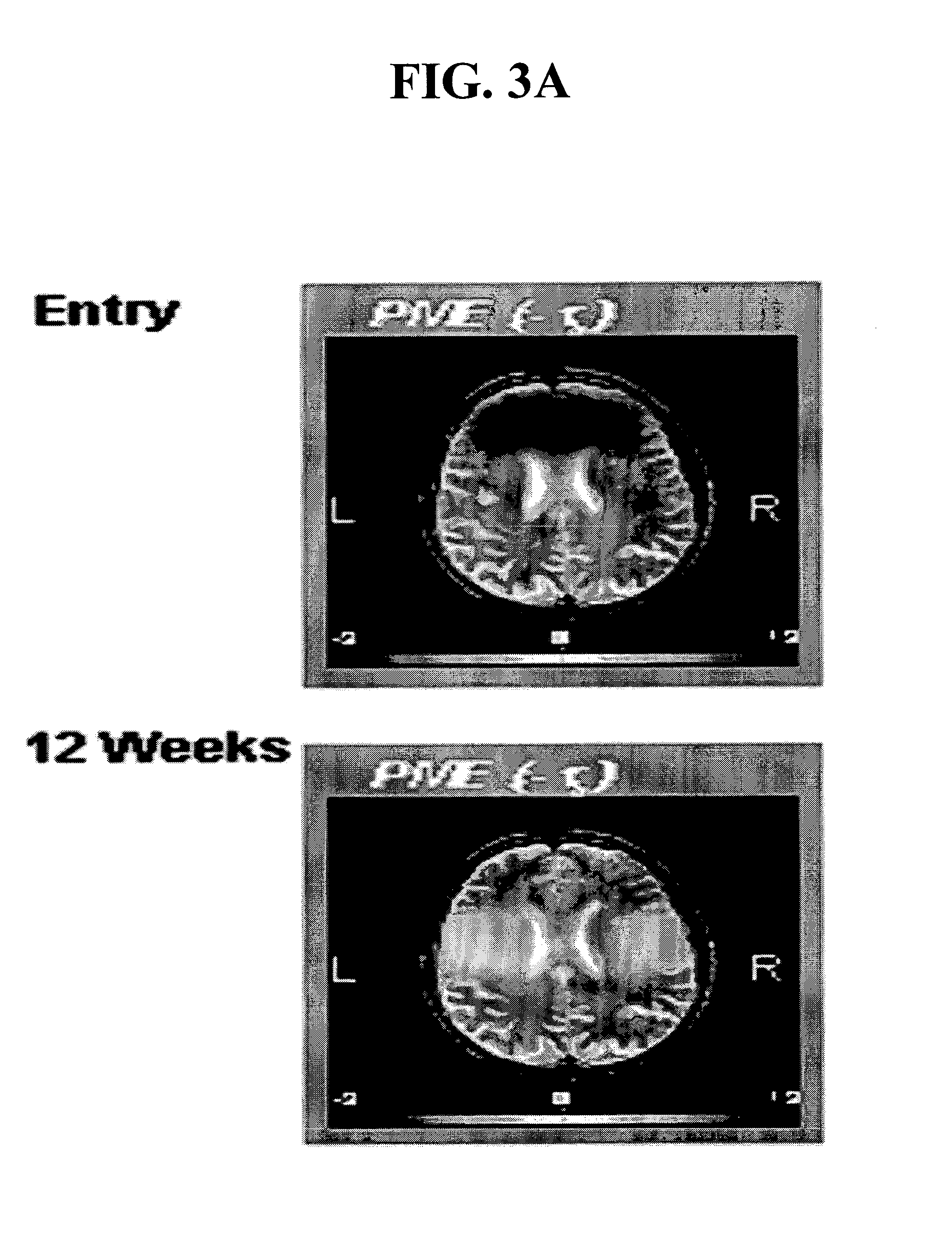Compounds, compositions and methods for treating neuropsychiatric disorders
a neuropsychiatric disorder and composition technology, applied in the field of neuropsychiatric disorders, can solve the problems of affecting the brain metabolism of patients with antidepressants, affecting displaying a disturbing side-effect profile in this fragile patient population, so as to improve the survival rate of patients with a fragile patient population, improve the effect of brain metabolism, and reduce the neurological deficit scor
- Summary
- Abstract
- Description
- Claims
- Application Information
AI Technical Summary
Benefits of technology
Problems solved by technology
Method used
Image
Examples
Embodiment Construction
[0341]Carnitines in general are compounds of including the chemical formula (1):
[0342]
where R is hydrogen or an alkanoyl group with 2 to 8 carbon atoms, and X− represents the anion of a pharmaceutically acceptable salt.
[0343]The invention described herein includes both the administration of L-carnitine or an alkanoyl L-carnitine or one of its pharmacologically acceptable salts of formula (1) in the treatment of depression, and pharmaceutical compositions, which can be administered orally, parenterally or nasally, including controlled-release forms. Preferably, the alkanoyl L-carnitine is selected from the group consisting of acetyl-L-carnitine (hereinafter abbreviated to ALC or ALCAR), propionyl L-carnitine (hereinafter abbreviated to PLC), butyryl L-carnitine, valeryl L-carnitine and isovaleryl L-carnitine, or one of their pharmacologically acceptable salts. The ones preferred are acetyl L-carnitine, propionyl L-carnitine and butyryl L-carnitine. The most preferred is acetyl L-carn...
PUM
| Property | Measurement | Unit |
|---|---|---|
| median time | aaaaa | aaaaa |
| thick | aaaaa | aaaaa |
| thickness | aaaaa | aaaaa |
Abstract
Description
Claims
Application Information
 Login to View More
Login to View More - R&D
- Intellectual Property
- Life Sciences
- Materials
- Tech Scout
- Unparalleled Data Quality
- Higher Quality Content
- 60% Fewer Hallucinations
Browse by: Latest US Patents, China's latest patents, Technical Efficacy Thesaurus, Application Domain, Technology Topic, Popular Technical Reports.
© 2025 PatSnap. All rights reserved.Legal|Privacy policy|Modern Slavery Act Transparency Statement|Sitemap|About US| Contact US: help@patsnap.com



